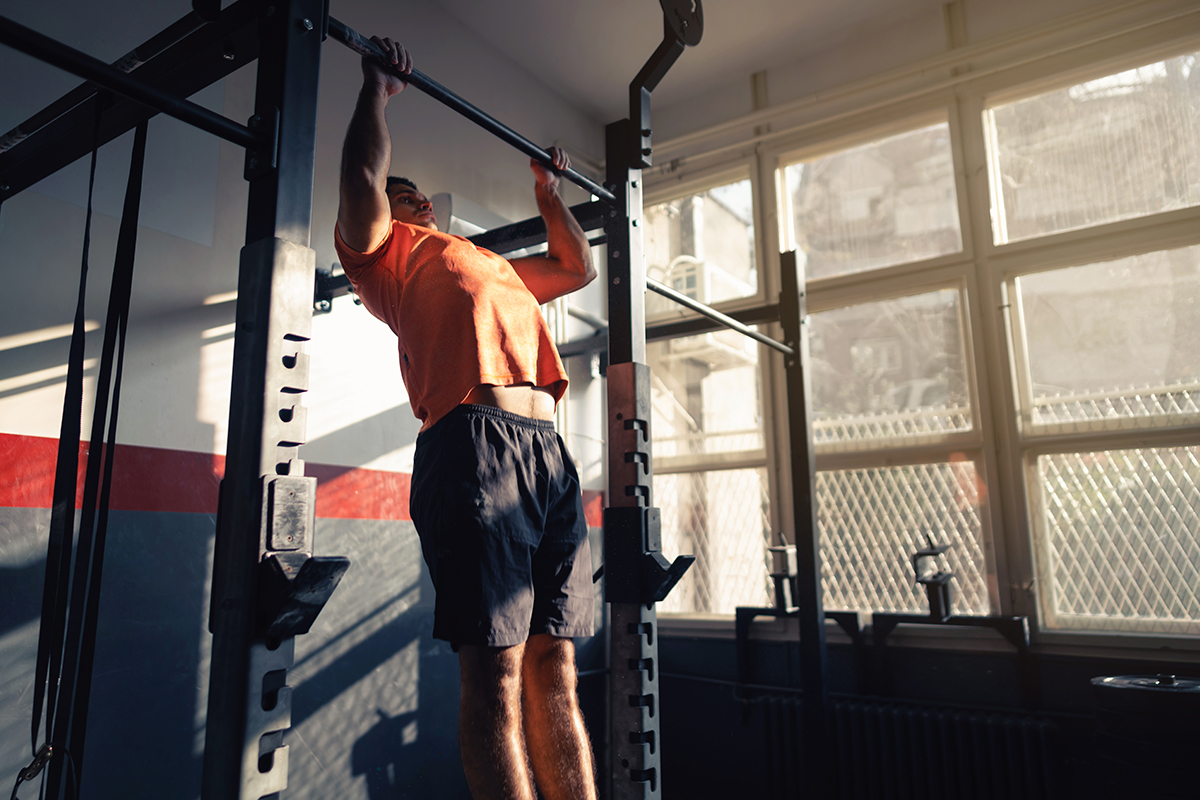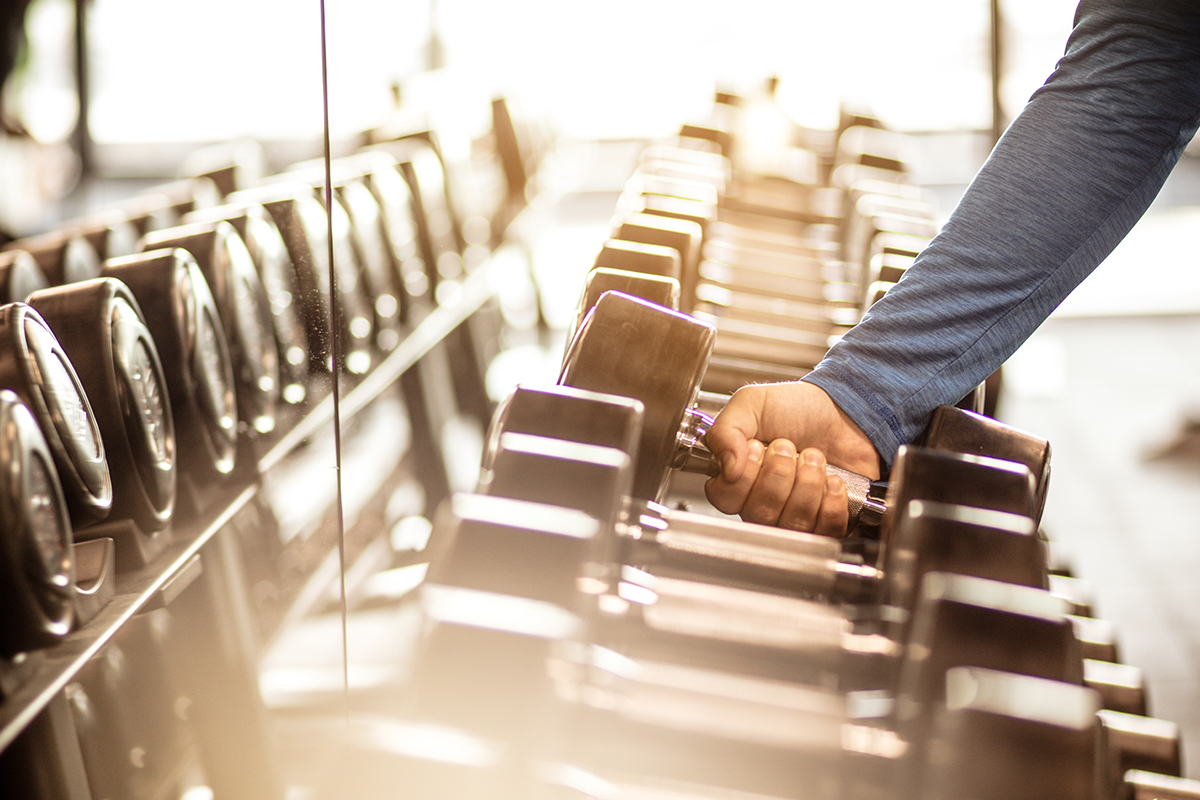I was talking strength training with a colleague over Slack the other day, and we concluded that more often than not, our modern lifting routines are just derivative of whatever regimen we picked up in high school. You may now have a fitness app or a trainer, or religiously follow someone’s workouts on Instagram, but if you were dropped without a phone into the middle of a gym, what would you do?
Many of us tend to revert back to the first time we felt lost and shy around a bunch of weights and machinery — and spend a half hour fiddling with the bench press.
Eighteen-year-olds can get away with muscle isolation training. Like bodybuilders — who make a living on anointing “Chest Day,” “Bicep Day,” so on — they’re pumped full of hormones and eager to overtrain their Hollywood “show” muscles, all in the name of looking good. They also, generally, have the time to commit to that sort of routine, and the drive to actually stick with it, lest they get left behind by their growing peers.
But there is little reason for the rest of us (especially the middle-aged-and-ups among us), to be training this way. Defaulting to an hour of various, dubious takes on the bicep curl — or even worse, just cobbling every upper body exercise you can remember into a workout and calling it a day — may indeed qualify as “lifting,” but it’ll leave you far too sore to get back on the grind the next day, and will ultimately lead to injury.
A grown man with more practical health goals (maintain fitness, stave off injury) deserves a better plan than whatever you scribbled into a spiral notebook decades ago. Especially during this pandemic, when many of us are training in the dark and may not even have access to a gym.
That’s where the “push-pull” routine comes in.
The fitness world has a bad habit of using exclusive-sounding terminology or shorthand that leaves those on the outside feeling needlessly intimidated. Consider this silly track workout: 2X1000@13.1+4×1600@26.2. Or, you know, every CrossFit acronym ever. “Push-pull,” meanwhile, means exactly what it says and says exactly what it means. It isn’t a workout, but a prescription for how to split one’s lifting during a given week. Half the days should revolve around pushing movements. The other half should focus on pulling movements.
The easiest way to wrap your head around this concept is to consider the two poster-boy exercises for each movement: push-ups and pull-ups. When you perform a push-up, you’re pushing against the floor to create strain. When you perform a pull-up, you’re pulling your body towards the bar to create strain. If you’re ever uncertain about whether an exercise qualifies as push or pull, just mime the movement to yourself, and the answer will reveal itself pretty quickly.
Push exercises specifically target the chest, shoulders and triceps. Pull exercises engage the back, biceps and forearms. It isn’t necessarily incorrect to mix and match exercises from either of these “buckets” in one lifting session. But on the flip side, formulating your weekly routine around this central credo is an economical way to get several excellent workouts in each week, and know exactly what you’re looking to accomplish each go-around — dilly-dallying kept to a minimum.
When you train by movements, you’re engaging all the muscles that are most likely to get recruited for those movements. It’s functional fitness — giving you the strength you need to perform intensive tasks you’ll encounter in daily life — and it’s full-body, too, just spread out over the course of a week. On Monday, for instance, you might do a variety of push exercises. On Tuesday, you’ll pull. Wednesday is a rest day, or something entirely different: legs, core, a longer cardio session. But Thursday and Friday, you can get right back to it: push, then pull.

In order to keep gains coming (assuming, again, that you’re neither peak-Arnold nor a high school linebacker), you need to lift more. A muscle protein synthesis cycle lasts about 72 hours. This approach accommodates that timeframe, by A) giving your muscles time to recover, while B) still keeping you in the gym most days out of the week. Prioritizing movement over muscles helps disperse the focus (and the resulting strain) throughout the body, so no one part is ever carrying too much of the load.
Plus, it’s all easily adaptable within that framework. You can customize your workout however you like, so long as it honors the push-pull rhythm. For instance, your Monday push day might go heavier on the weight and lighter on the reps, while the Thursday push day would involve more reps — also known as hypertrophy training.
It’s an empowering feeling — literally — to know exactly how you want to approach a lift day. And you’ll undoubtedly find, as I have, that it helps while working out (whether you’re going to the gym or your garage), to engage the same group of muscles around a familiar movement for an extended period. With 15 minutes left in your session, you don’t have to worry about getting an entire new body part loose or warm.
Not to mention, when you’re lifting that many days during the week, you may have a couple sessions that only last 15 minutes. That’s okay. Just putting some time on three to five moves, at 10 reps, three sets apiece, is a great way to keep the train moving. To get you started, I’ve assembled eight great moves for each movement. Feel free to choose from the exercise bank below to cook up your own bespoke workouts. Happy lifting, and remember: work smarter than your high school self, not harder.
| Push Exercises | Pull Exercises |
| – Push-ups – Bench press – Incline bench press – Overhead press – Triceps dips – Chest flys – Shoulder press – Skull crushers | – Pull-ups – Chin-ups – Bent-over rows – Cable rows – Dumbbell rows – Bicep curls – Hammer curls – Lat pulldowns |
Whether you’re looking to get into shape, or just get out of a funk, The Charge has got you covered. Sign up for our new wellness newsletter today.
























